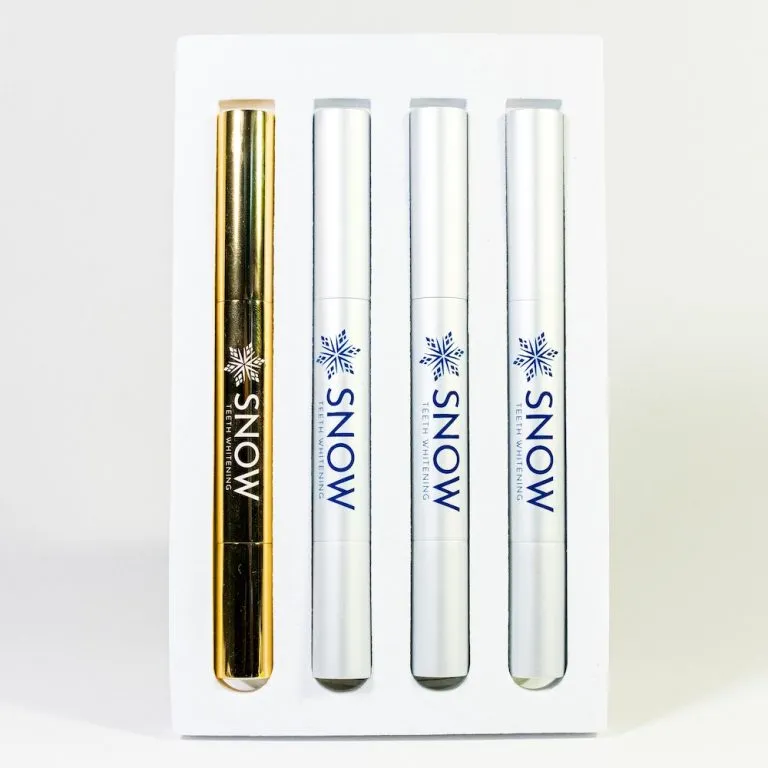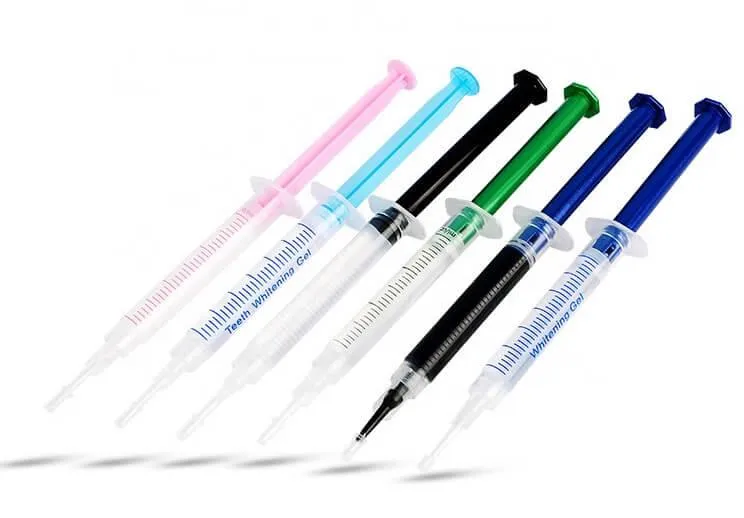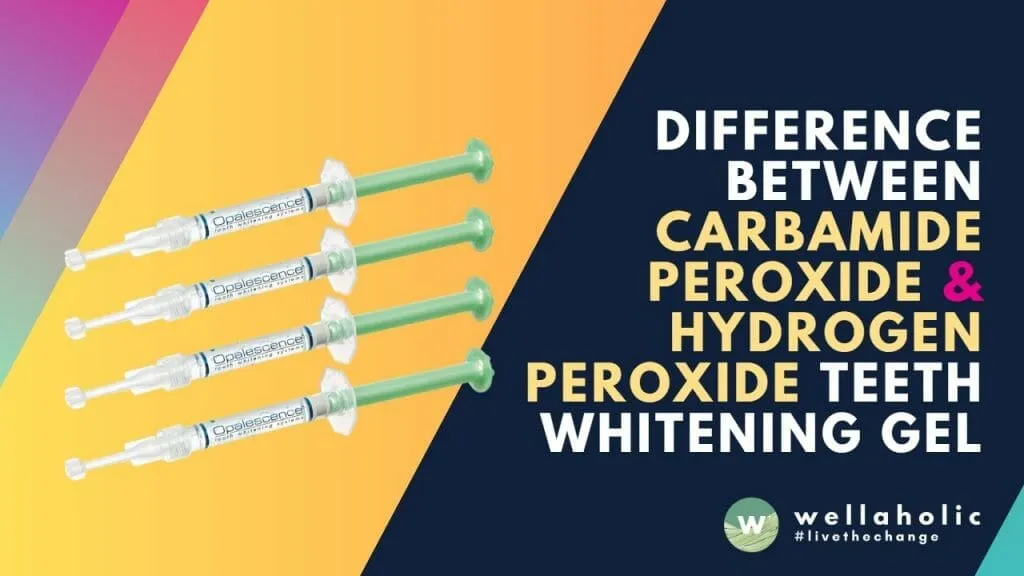Hydrogen Peroxide vs Carbamide Overview
Teeth whitening is a popular cosmetic procedure, and two primary agents often used are hydrogen peroxide and carbamide peroxide. Both are effective in bleaching teeth, but they have different characteristics and modes of action. Understanding these differences is crucial for making informed decisions about your oral health. The choice between hydrogen peroxide and carbamide peroxide often depends on factors like the desired speed of whitening, the concentration of the active ingredient, and personal preference. Professional dental treatments typically use higher concentrations of these agents compared to over-the-counter products, leading to more significant and faster results. This article dives into the specifics of each compound, highlighting their advantages, disadvantages, and how they compare in terms of efficacy and safety. Proper knowledge of both can help you achieve a brighter smile.
How Hydrogen Peroxide Whitens Teeth
Hydrogen peroxide is a strong oxidizing agent. In teeth whitening, it breaks down into water and oxygen. This oxygen penetrates the enamel and dentin of the teeth, oxidizing the stain molecules and making them less visible. The process effectively lifts stains caused by coffee, tea, tobacco, and other dietary or lifestyle factors. The concentration of hydrogen peroxide is a key factor in its effectiveness. Higher concentrations generally lead to faster and more dramatic results, but they also increase the potential for sensitivity and other side effects. Professional dental treatments often use higher concentrations, while over-the-counter products contain lower percentages to ensure safety for home use. The way the hydrogen peroxide interacts with the tooth structure is a complex process involving diffusion and chemical reactions, which ultimately leads to a brighter and whiter smile.
The Science Behind Carbamide Peroxide

Carbamide peroxide is another compound commonly used in teeth whitening, and it functions differently compared to hydrogen peroxide. Carbamide peroxide is a complex of urea and hydrogen peroxide. When it comes into contact with water, it breaks down into hydrogen peroxide and urea. The hydrogen peroxide then functions in the same way as described above, oxidizing stain molecules in the teeth. Urea plays a role as well by helping to break down the peroxide more slowly, and also by helping to moisturize the tooth. This slow release is why carbamide peroxide is often used in at-home whitening kits that require the product to be left on the teeth for longer periods. It is considered a gentler option than hydrogen peroxide, especially at higher concentrations. Both compounds achieve similar whitening results, but the difference lies in the delivery and rate of action. The choice between hydrogen peroxide and carbamide peroxide often depends on the treatment setting and desired speed of whitening.
Hydrogen Peroxide Whitening Concentration Levels
The concentration of hydrogen peroxide significantly influences its effectiveness in teeth whitening. Over-the-counter whitening products typically contain hydrogen peroxide in concentrations ranging from 3% to 10%. These lower concentrations are designed to be safe for at-home use, reducing the risk of tooth sensitivity and gum irritation. Professional dental treatments can use much higher concentrations, sometimes up to 40%, to achieve faster and more dramatic results. However, these higher concentrations require professional supervision to minimize potential side effects. The duration of treatment and the application method also vary based on the concentration. Products with lower concentrations may require longer application times or more frequent use to achieve desired whitening effects. Choosing the right concentration depends on individual needs, the extent of staining, and professional guidance.
Carbamide Peroxide Whitening Concentration Levels
Carbamide peroxide also has varying concentration levels, which affect its whitening capabilities. In at-home whitening kits, the concentration of carbamide peroxide typically ranges from 10% to 22%. When carbamide peroxide breaks down, it releases hydrogen peroxide, so these concentrations are equivalent to approximately 3% to 7% hydrogen peroxide. Professional treatments might use higher concentrations of carbamide peroxide, although it’s less common due to the prevalence of direct hydrogen peroxide application. The breakdown process of carbamide peroxide is slower than that of hydrogen peroxide, which allows for sustained whitening effects over time. This is one reason why carbamide peroxide is suitable for overnight or extended-use whitening. The choice of carbamide peroxide concentration depends on the desired whitening effect, the patient’s sensitivity levels, and the recommended usage duration.
Key Differences in Whitening Effectiveness

The effectiveness of hydrogen peroxide and carbamide peroxide depends on several factors, including concentration, application method, and the individual’s tooth structure. Hydrogen peroxide generally produces quicker results, particularly when used at higher concentrations in a professional setting. The immediate release of the active whitening agent contributes to this rapid action. Carbamide peroxide, while potentially slower to act initially, can provide sustained whitening over a longer period because of its slower breakdown. Both agents can achieve similar levels of whitening, but the timeline may differ. Factors such as the type and intensity of stains also impact how effectively each compound works. Surface stains might respond quickly to both, while deeper stains may require longer treatment times or higher concentrations. Professional dental assessments can help determine which whitening method is best suited for individual needs and expected outcomes.
Hydrogen Peroxide Benefits Explained
Hydrogen peroxide offers several advantages in teeth whitening. Its primary benefit is its fast-acting nature, which allows for quicker whitening results, especially with higher concentrations used in professional settings. The ability to quickly penetrate the tooth structure makes it effective in removing both surface and deeper stains. Hydrogen peroxide is also relatively easy to apply in various forms, including gels, strips, and in-office treatments. This versatility makes it a convenient option for both professional and at-home use. When used under professional supervision, hydrogen peroxide can be highly effective in achieving dramatic improvements in tooth shade within a short period. However, it’s important to balance these benefits with potential side effects.
Carbamide Peroxide Benefits Unveiled
Carbamide peroxide offers distinct benefits compared to hydrogen peroxide, making it a preferred choice for some users. One of its primary advantages is its gentler action, which often results in less tooth sensitivity, particularly at lower concentrations. The slower release of hydrogen peroxide from carbamide peroxide allows for more gradual whitening, which can be beneficial for those with sensitive teeth. Carbamide peroxide is commonly used in at-home whitening kits, which are convenient and can be used overnight or over several hours. This slow and steady approach can provide consistent whitening results with minimal irritation. Furthermore, carbamide peroxide also helps to moisturize the teeth due to the urea component, making the overall whitening experience more comfortable.
Potential Side Effects of Hydrogen Peroxide

While hydrogen peroxide is effective, it is associated with potential side effects. Tooth sensitivity is a common issue, with individuals experiencing discomfort or sharp pain when consuming hot or cold foods or drinks. Gum irritation or inflammation can also occur, particularly if the whitening agent comes into contact with the soft tissues. In rare cases, excessive use or high concentrations can lead to chemical burns on the gums or damage to the enamel. These side effects are typically temporary and resolve after the treatment is completed. Using hydrogen peroxide under professional guidance and following recommended usage instructions can help minimize these risks. Sensitivity and irritation levels vary among individuals, so it’s important to monitor the effects and adjust the treatment accordingly.
Potential Side Effects of Carbamide Peroxide
Carbamide peroxide, although gentler than hydrogen peroxide, can still cause some side effects. The most common side effect is tooth sensitivity, although it’s often less severe compared to hydrogen peroxide. Gum irritation can also occur, though it’s generally mild. Some individuals may experience a temporary change in tooth texture or minor blistering of the gums. The presence of urea in carbamide peroxide can sometimes cause a slight aftertaste. These side effects are generally temporary and subside once the treatment is complete. Choosing a lower concentration and using the product as directed can reduce the chances of adverse effects. It is advisable to consult with a dentist before beginning any teeth whitening treatment.
The Importance of Professional Advice
Seeking professional advice from a dentist is crucial before starting any teeth whitening treatment. A dentist can assess your oral health, identify any underlying issues like cavities or gum disease, and determine if whitening is suitable for you. Professional guidance helps in selecting the appropriate whitening method, whether it involves hydrogen peroxide, carbamide peroxide, or another approach. Your dentist can also provide custom-fitted trays for at-home treatments, ensuring the whitening agent is applied evenly and safely. They can also monitor your progress and address any side effects promptly. Professional supervision significantly reduces the risk of complications and ensures the best possible results. Regular dental check-ups are essential for maintaining oral health and achieving a bright, healthy smile.
Maintenance and Aftercare for Whitening

Maintaining and caring for your teeth after whitening is essential for preserving the results and ensuring long-term oral health. Avoid consuming foods and drinks that stain teeth, such as coffee, tea, red wine, and dark-colored berries. Practice good oral hygiene by brushing your teeth twice a day, flossing daily, and using an alcohol-free mouthwash. Regular dental check-ups and professional cleanings are important to remove any surface stains and maintain your brighter smile. Consider using a whitening toothpaste or a touch-up whitening treatment as directed by your dentist. Avoiding smoking and using tobacco products will also prevent the recurrence of stains. With proper care, the results of teeth whitening can last for several months to years.
Alternatives to Hydrogen Peroxide and Carbamide
Besides hydrogen peroxide and carbamide peroxide, several other alternatives are available for teeth whitening. Whitening toothpastes often contain mild abrasives and stain-removing agents to help maintain a bright smile. Professional treatments, such as dental veneers and bonding, can also address discoloration and improve the aesthetics of your teeth. Some natural remedies like baking soda or activated charcoal are purported to whiten teeth, but it’s crucial to consult with a dentist before using them, as they may cause enamel erosion. For individuals with sensitive teeth, professional desensitizing treatments can be combined with whitening procedures to minimize discomfort. Discussing your options with a dentist is the best way to choose a safe and effective whitening strategy that suits your individual needs and preferences.
